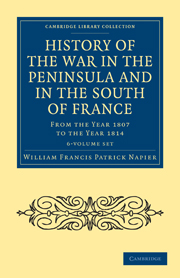 An unnecessarily melodramatic heading – and do vampires have shadows? They show no reflection in mirrors, and of course they can’t appear in the light of the sun, but do they cast a shadow in moonlight or candle-light, or on the old-fashioned limelight of the theatre stage?
An unnecessarily melodramatic heading – and do vampires have shadows? They show no reflection in mirrors, and of course they can’t appear in the light of the sun, but do they cast a shadow in moonlight or candle-light, or on the old-fashioned limelight of the theatre stage?
Bram Stoker (1847–1912) is famous for one Big Thing: he was the author of Dracula, not by any means the first novel involving the blood-sucking Undead, but the one which ‘codified’ the features of vampirism which have recurred in the endless stream of fiction, and stage, film and television dramas which have followed. The story has a strong narrative drive and some genuinely frightening moments – the fly-eating ‘lunatic’ Renfield is particularly haunting – and it is safe to say that none of the adaptations I have ever seen have done the book anything like justice. Why don’t they stick to the original plot and dialogue, which (apart from some treacly religiosity) work fine without being tampered with? (But then the same could, of course, be said of any adaptation, from Austen to Tolkien: it all goes to pot as soon as the adaptor thinks s/he knows better than the author…)
The centenary of Stoker’s death last year was commemorated by a mild flurry of interest in his life and work, and there is a lengthy article online at the TLS website by Tracy C. Davis commenting on his literary legacy. We chose Dracula as one of the first titles in the CLC Fiction and Poetry list, and are now reissuing his two-volume Personal Reminiscences of Henry Irving – a work which he may have considered as his own most important legacy.
Stoker first saw the legendary actor (born John Henry Brodribb) perform in as Captain Absolute in Sheridan’s The Rivals in Dublin in 1867, and his reminiscences start there. He was a keen theatre-goer, and was clearly bowled over by Irving’s startling approach to the role. At the time (extraordinary as it seems to us), any established play had a complete ‘choreography’ of movement and interaction inside an almost unchanging stage set. The modern job of the director did not exist, and novice actors learnt their lines and found their way into the ensemble. A star actor could arrive and slot into an existing production without more than the most minimal rehearsal (some actually sent their dresser to represent them at the run-through). Irving tried within these limitations to introduce a nuanced characterisation which Stoker found exhilarating and revolutionary, though – as he points out – it was wasted on the Dublin critics of the period.
Stoker compares Irving’s study of individual character with the ability of Cuvier or Owen, who could ‘from a single bone reconstruct giant reptiles of the Palaeozoic age’. He had undergone a fifteen-year apprenticeship as an actor before he became an overnight sensation in a now forgotten play, Two Roses (and indeed, as Stoker learned much later, his first appearance in Dublin in 1860 had been disastrous not because of his own performance but because he was dropped in to replace a popular local actor who had been sacked). His performance in The Bells confirmed him as a great actor, and enabled him to take over the Lyceum theatre in London, to stage plays of his own choosing, and to build a team of backstage staff and actors (of whom the most famous was undoubtedly Ellen Terry) who shared his vision of what acting and the theatre should be.
Stoker had taken up theatre criticism for a Dublin newspaper (as an antidote to the stultifying boredom of his job in the civil service), and as a result was introduced to Irving when he returned to Dublin. After a convivial dinner, recited Thomas Hood’s The Dream of Eugene Aram (a melodramatic poem apparently known to most nineteenth-century schoolboys, and indeed to Bertie Wooster), after which he ‘collapsed half fainting’; Stoker clearly responded equally melodramatically (he himself describes it as ‘like a violent fit of hysterics’). A bond of friendship was created, which resulted in Stoker dropping everything and moving to London at Irving’s request, in 1878, to act as his business manager at the Lyceum. Within a month, he had quit his job, finished a book he was writing and got married – the latter event, which had been planned to take place the following year, came as a surprise to Irving. For nearly thirty years Stoker was with Irving almost daily, in the theatre and on tour in Britain and the United States, as factotum and friend.
The Reminiscences are not very well structured – they are not strictly chronological, nor even always about Irving, and a tendency towards unconnected anecdotes is seen at its most absurd near the end of the first volume, where, under the heading of ‘Some guests’, twelve double-column pages are taken up with a list of more than a thousand of the great and good who attended the first-night gatherings at the Lyceum, and where (to take one column at random), Eleonora Duse rubs metaphorical shoulders with Prince Edward of Saxe-Weimar, the Bishop of Ripon and his wife, and Mark Twain.
But this list does serve to emphasise the importance of Irving’s career as pivotal in making actors respectable and acting respected as an art (at the same time as Jenny Lind was doing something similar for singing). Queen Victoria’s uncle had one of the most popular actresses of his day as his mistress (and gave her up in the hope of legitimate children); but Irving was not only summoned to give performances for the Queen and her family, but was the first actor to be knighted. (The queen is said to have said ‘I am very, very pleased’, as she tapped him on the shoulder with a sword.)
And Irving moved in the highest intellectual and social spheres. Sir Halliday Macartney brought the Chinese ambassador to see him in Hamlet (the ambassador, in full mandarin glory, almost strayed on to the stage in Ophelia’s mad scene). Baroness Burdett Coutts took him on her yachting party to Morocco (which inspired one of his greatest roles, Shylock in The Merchant of Venice). Ford Madox Brown and Edward Burne-Jones designed sets and costumes. Sullivan and Stanford wrote music. Tennyson allowed him to stage two of his verse dramas, The Cup and Becket (both adapted by Irving himself). There is a wonderful story about the former: the setting (Roman Ephesus) and costumes had been designed to be authentic, using the advice of Dr Alexander Murray of the British Museum. When asked if he had enjoyed the play, he said he liked it well enough at first, but in the temple scene two girls came on carrying an amphora which was red-figure rather than black – ‘I need not say that after that I could enjoy nothing!’
Other celebrity encounters are more disturbing: the explorer Richard Burton (whose tendency to snarl and reveal his canine teeth is observed) explains how he was forced to stab a Arab boy through the heart or risk discovery as an infidel in Mecca, and H.M. Stanley is praised for his gentlemanly prowess in bringing the benefits of (Belgian) civilisation to the benighted inhabitants of the Congo. There are some inevitable passages of the inherent, unconscious racism to be found in so many books of this period. And there is the invariable swooning at the condescension of royalty – especially the Prince of Wales, ‘now His Most Gracious Majesty Edward VII., R. et I.’.
Conan Doyle wrote Irving a play, Waterloo; Irving himself adapted a dramatisation (Ravenswood) of Sir Walter Scott’s The Bride of Lammermoor, which had been written at Rokeby Hall (where Morritt family tradition had it that Scott had no memory of actually having written it). Plays by Sardou and Dumas père were translated, The Corsican Brothers especially being hugely successful for its lavish and opulent staging; and of course the whole of the Shakespearian canon was a regular part of the Lyceum repertoire, and led to the publication of The Henry Irving Shakespeare, with its practical suggestions for performance, sets, costumes and cuts.
The one role which doesn’t get mentioned at all in the Reminiscences is Dracula – though Stoker’s description of the demonic Count simply IS Irving. Did he offer the story as a drama, only to have it rejected? Is it the thinly disguised scream of a life totally drained by absorption into that of another? Cod-psychological speculation is pointless, but Dracula remains a cracking good read, and Stoker’s odd, jumpy, loyal and funny reminiscences are a touching homage by a devoted friend.
Caroline



Pingback: The Bountiful Lady | Cambridge Library Collection Blog